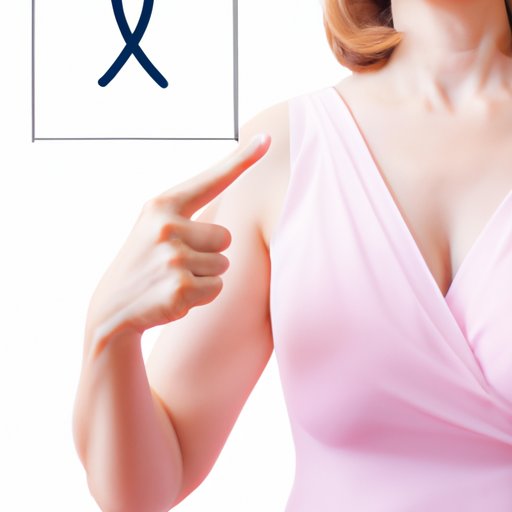
Introduction
Breast cancer is a widespread disease that affects millions of women worldwide. Although it can occur at any age, early detection is crucial in ensuring successful treatment and preventing the cancer from spreading. Mammograms are one of the most effective ways to detect breast cancer early, and the medical community widely promotes it as a screening tool. In this article, we will guide you through everything you need to know about mammograms, when and how to get one, and other essential information that women should know about their breast health.
Breast Cancer Awareness: The Importance of Mammograms
Mammograms are essential in breast cancer prevention, and they are especially crucial for women above the age of forty. According to the American Cancer Society (ACS), women should start getting annual mammogram screenings when they turn 40 years old, although some medical experts advise getting them earlier.
The frequency of mammogram screenings changes depending on the age of the woman. Women ages 40 to 44 are recommended to have the option of starting annual breast cancer screenings, while those 45 to 54 years old should have a mammogram every year. Meanwhile, women aged 55 and up can continue annual screenings or switch to once every two years. It is essential to follow the screening guidelines provided by your healthcare provider or the ACS.
What to Expect During Your First Mammogram
The first mammogram can be daunting for some women, so it is essential to prepare yourself adequately for the procedure. During the mammogram, a specially trained radiology technologist will take x-rays of your breasts using an x-ray machine. The x-rays will show any lumps, masses, or abnormalities in your breasts that are not visible during a physical exam.
To prepare for your mammogram, you should dress comfortably in a two-piece outfit. Do not wear powders, lotions, perfumes, or deodorants that may interfere with the x-ray’s results. The entire procedure will take about 30 minutes from start to finish, and you will be asked to undress from the waist up. You will stand in front of the x-ray machine, and the technologist will place one of your breasts on a flat plate. Another plate will compress the breast to flatten and hold it in place while the x-rays are taken. You may feel some discomfort, squeezing, or pressure during the compression, but it is usually quick and tolerable.
After the mammogram, a radiologist will interpret the results and share them with your healthcare provider. If they notice anything unusual, they may recommend additional testing or imaging to get a closer look.
At-Home Breast Cancer Screening: Should You DIY?
In recent years, several at-home mammogram machines have entered the market, allowing women to perform breast cancer screening from the comfort of their homes. Although the machines may seem like a convenient alternative to traditional mammogram screenings, they are not recommended by the medical community. This is because, unlike traditional mammograms done by a professional, at-home screenings may not be as accurate and miss some early signs of breast cancer.
Current research and data on the efficacy of at-home breast cancer screening devices are primarily limited to their use in addition to traditional mammogram screenings, not as a replacement. If you are considering using an at-home screening device, it is crucial to speak with your healthcare provider to determine if it would be beneficial and how often you should use it.
The Pillars of Breast Health: Mammograms and Beyond
Mammograms are one of the most vital tools for breast cancer prevention, but they are not the only way to maintain your breast health. Adopting healthy habits such as having a balanced diet, regular exercise, avoiding smoking, and limiting alcohol intake can help maintain your overall health. Furthermore, getting regular check-ups and receiving other cancer screenings like skin, colon, and cervical cancer screening can also help prevent and detect early-stage cancer.
If you are at high risk for breast cancer, consider speaking with a genetic counselor about genetic testing to determine your cancer risk. Your healthcare provider may also recommend other preventive measures like taking aspirin or other medications to lower your risk of developing the disease.
Mammograms in the Time of Covid-19: What You Need to Know
The Covid-19 pandemic has disrupted medical appointments and screenings, and mammograms are no exception. However, the Centers for Disease Control and Prevention (CDC) and other medical associations recognize the importance of continued breast cancer screening, especially for women who are at high risk or those who need follow-up appointments.
If you are scheduled to get a mammogram during the pandemic, it is essential to call your healthcare provider or radiology clinic in advance to check if they are open and have safety measures in place to prevent spread of the disease. You may also want to prepare by bringing a mask, hand sanitizer, and practicing social distancing measures when possible.
Why You Should Never Skip a Mammogram: A Personal Story
Although getting a regular mammogram may seem inconvenient or uncomfortable, it can be life-saving. A personal anecdote can help drive home the importance of mammograms in breast cancer prevention. In this section, tell the story of someone who got a mammogram and found a lump or was diagnosed with breast cancer. Share their emotional journey, from receiving the news to treatment and recovery. Use the story to underscore the importance of regular mammograms and how they can help save lives.
Conclusion
In conclusion, regular mammogram screening is essential for breast cancer prevention and early detection. Women should follow the ACS guidelines for screening frequency based on their age, and always speak with their healthcare provider to determine when to start getting mammograms and how often. In addition to mammograms, maintaining an overall healthy lifestyle and receiving regular checkups and other cancer screenings can also help prevent and detect early-stage cancer. Don’t let fear or inconvenience keep you from getting the care you need to protect your breast health.





